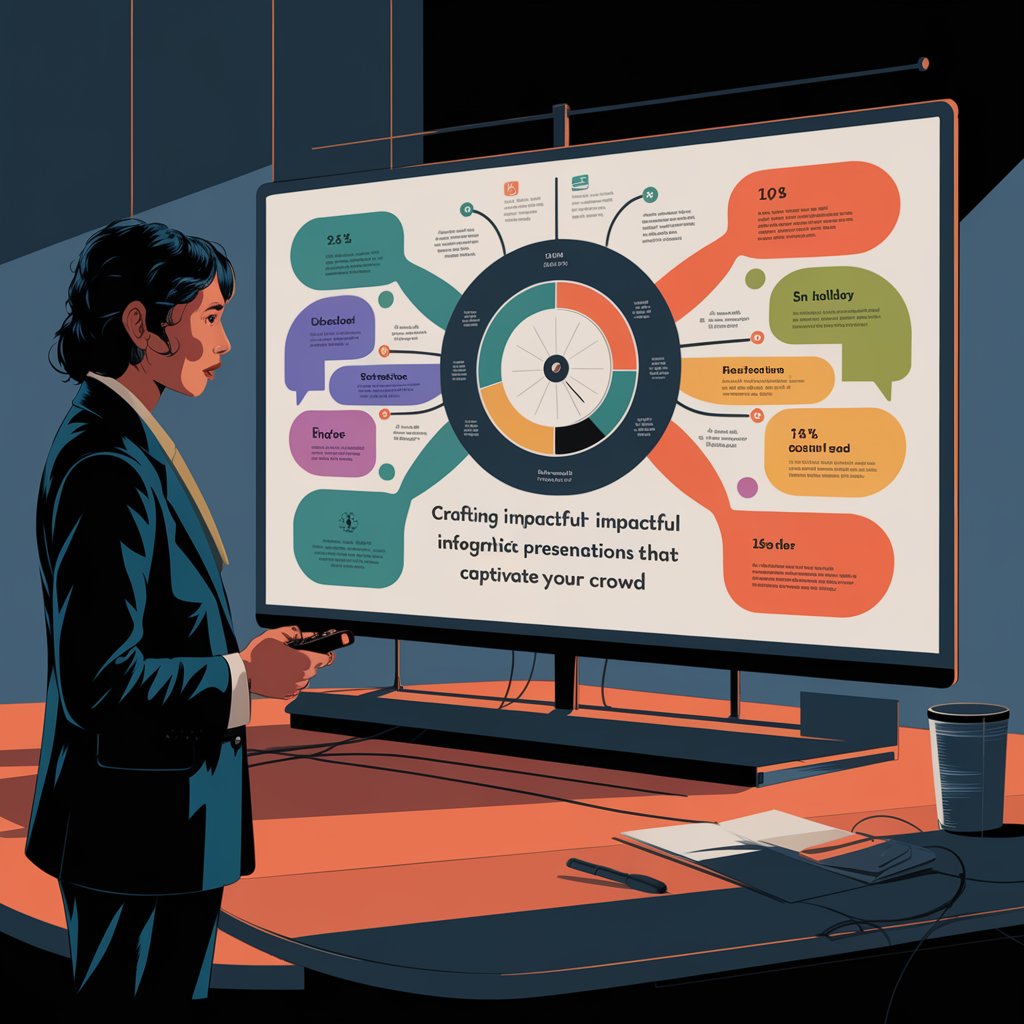
Explore the ultimate infographic design guide that can lead your business to success.
In today’s fast-paced world, creating a visually appealing and informative presentation is essential for effectively conveying your message.
Whether you’re pitching to potential clients, delivering a keynote speech, or presenting at a team meeting, the quality of your presentation can significantly influence your success.
One effective way to elevate your slides is by incorporating infographics.
These visuals not only simplify complex information but also enhance engagement and retention for your audience.
In this guide, we’ll explore the key elements of designing a professional presentation, the importance of infographics, and how you can use them to improve your storytelling.
What Makes a Presentation Professional?
A professional presentation should be well-organized, visually attractive, and easy to comprehend.
It goes beyond merely placing bullet points on a slide.
You need to pay attention to several key aspects:
Structure and flow: Your presentation should have a clear beginning, middle, and end.
This structure helps your audience follow along and remember the main points of consistency:
Choose a theme and stick to it. Use uniform colors, fonts, and layouts throughout to create a cohesive appearance.
Content clarity: Ensure your messaging is straightforward and concise.
Avoid overwhelming your audience with excessive text or irrelevant details.
Visual impact: Use visuals like infographics to break up text-heavy slides and make the information easier to digest.
The Power of Infographics in Presentations.
Infographics are visual tools that represent data and information, making complex ideas easier to grasp.
In a professional presentation, they can fulfill several important roles:
Convey Data: Utilize charts, graphs, and diagrams to showcase statistics, research results, or trends.
Simplify Processes: Infographics can outline step-by-step procedures, enhancing comprehension.
Support Your Key Points: By offering visual evidence or explanations, infographics can strengthen the messages you wish to communicate.
Boost Engagement: Audiences are naturally attracted to visuals.
Infographics can engage your viewers and maintain their attention longer than text-heavy slides.
How to Design Effective Infographics for Your Presentation
To create professional-looking infographics, consider these tips:
1. Focus on Clarity and Simplicity
Your aim is to make intricate information straightforward.
Avoid overwhelming your infographics with excessive data or design elements.
Concentrate on essential information and use visuals that emphasize the key points.
2. Choose the Right Type of Infographic
Different infographic types serve various functions:
Charts and graphs are ideal for displaying data and statistics.
Flowcharts effectively illustrate processes and workflows.
Timelines are perfect for presenting chronological information.
Comparison infographics can highlight different options, pros and cons, or trends.
3. Use a Consistent Color Palette
Make sure your infographics match the overall design theme of your presentation.
A consistent color scheme creates a unified appearance and enhances the professionalism of your presentation.
4. Incorporate Icons and Images
Icons and images can help break up text and add visual appeal.
Use relevant icons to illustrate concepts, but be careful not to overuse them—too many visuals can detract from your main message.
An infographic should mainly use visuals to convey the message.
Include text only when essential and keep it brief. Utilize headings, subheadings, and short phrases to help your audience navigate the information.
Common Mistakes to Avoid
While infographics are incredibly effective, there are several common pitfalls to be aware of:
Overloading with Information: Presenting too much data can confuse your audience. Focus on the key points.
Using Irrelevant Visuals: Ensure that your visuals are closely tied to your content.
Avoid using infographics just for the sake of it.
Neglecting Readability: Make sure the text in your infographic is large enough to be easily read from a distance.
Consider font size and color contrast carefully.
The Bottom Line:
Elevate Your Presentations with Infographics
Integrating infographics into your presentations can boost audience engagement, clarify complex information, and make your message more memorable.
By prioritizing clarity, consistency, and visual appeal, you can create a presentation that truly resonates.







